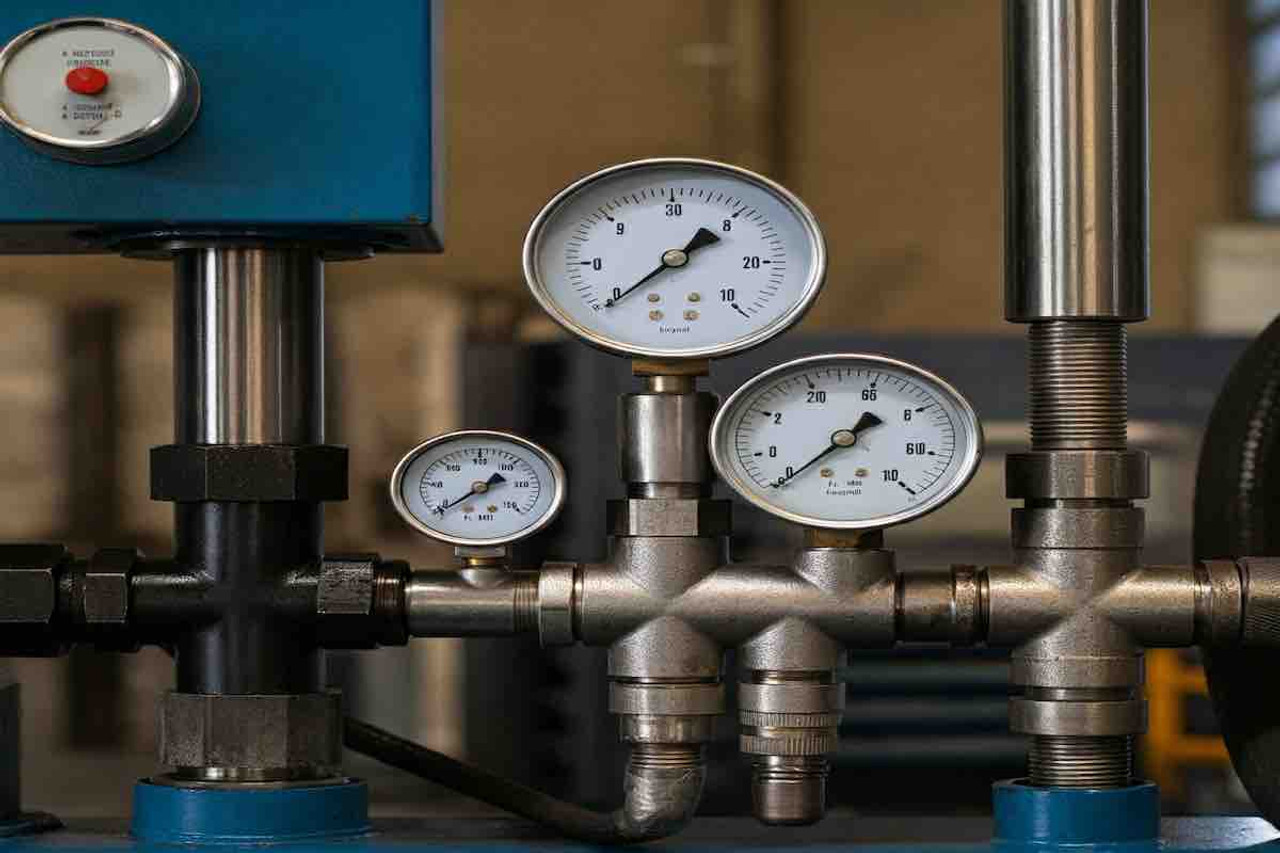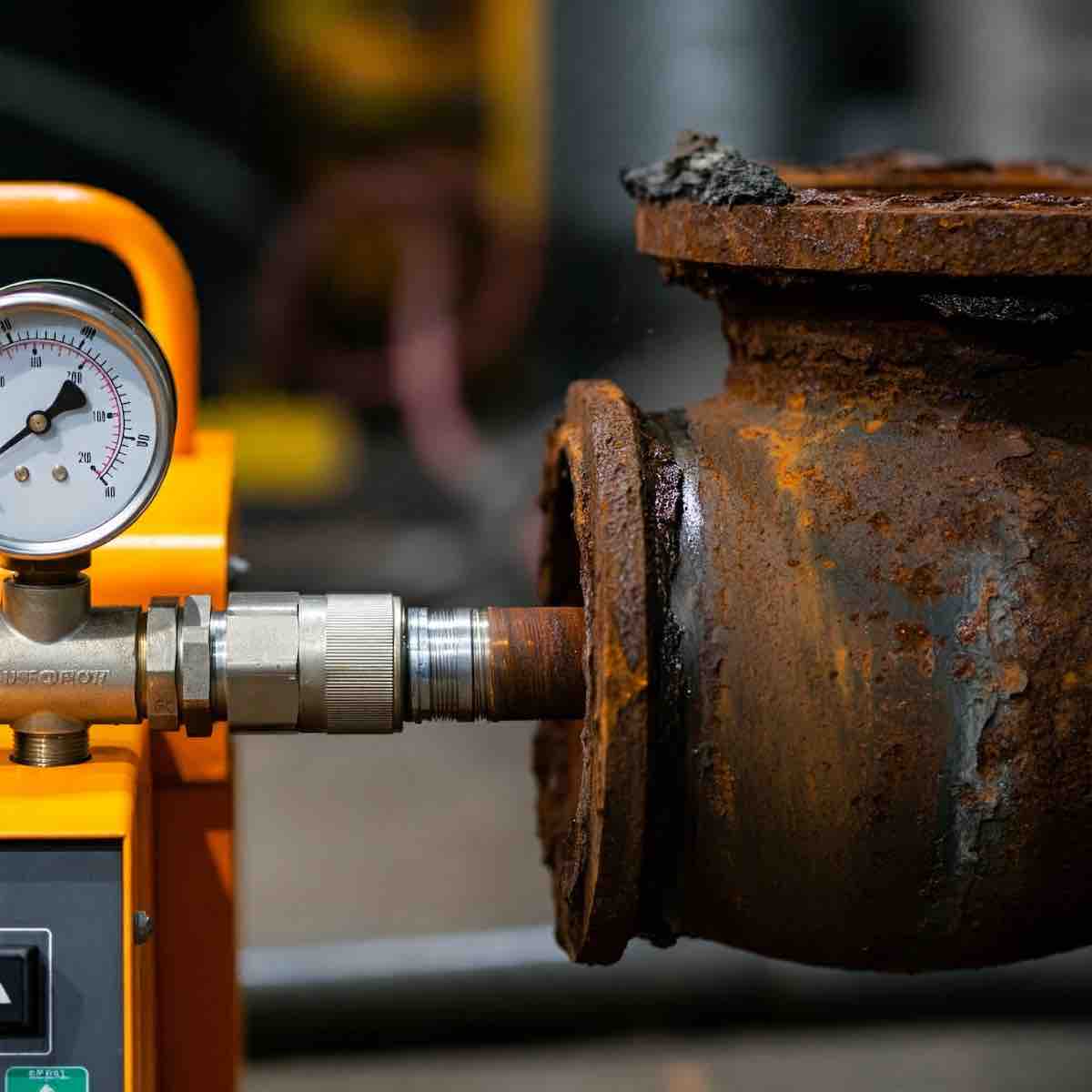The Complete Guide to Pressure Testing: Methods, Tools, and Best Practices (2025 Edition)
In industrial safety and quality assurance, pressure testing remains a cornerstone of system integrity verification. As we navigate through 2025, this comprehensive guide explores cutting-edge methods, state-of-the-art tools, and industry-leading best practices in pressure testing. Whether you're a seasoned professional or new to the field, this guide will equip you with the knowledge to conduct safe, efficient, and effective pressure tests across various industrial applications.
Key Takeaways
- Pressure testing is critical for ensuring the safety and reliability of pressurized systems
- Advanced technologies like AI and IoT are revolutionizing pressure testing procedures
- Proper planning, risk assessment, and personnel training are crucial for safe testing
- Environmental considerations are increasingly important in choosing testing methods
- Regular testing and maintenance can significantly extend the lifespan of pressure systems
Pressure Testing Methods
Comparison of Pressure Testing Methods
| Method | Medium Used | Advantages | Disadvantages | Best For |
| Hydrostatic | Water or other liquids | - Safer for high pressures<br>- Easier leak detection | - Risk of system contamination<br>- Potential for corrosion | Large vessels, pipelines |
| Pneumatic | Air or inert gases | - No risk of freezing<br>- Easier to set up | - Higher risk at high pressures<br>- Harder to detect small leaks | Systems sensitive to liquids, aerospace components |
| Combination | Both liquid and gas | - Comprehensive testing<br>- Detects different types of leaks | - More complex setup<br>- Longer testing time | Critical systems requiring thorough verification |
Innovative Testing Techniques (2025)
- Acoustic Emission Testing: Uses sound waves to detect structural anomalies during pressurization
- Thermal Imaging: Identifies leaks and weak points through temperature differentials
- Ultrasonic Testing: Detects microscopic leaks and material flaws
- Helium Leak Detection: Highly sensitive method for detecting extremely small leaks
Essential Pressure Testing Tools
- Digital Pressure Gauges
- Data Loggers
- Calibrated Pressure Relief Valves
- Hydraulic or Pneumatic Pumps
- Leak Detection Solutions
- Personal Protective Equipment (PPE)
Spotlight on AI-Enhanced Tools (2025)
- Smart Pressure Sensors: IoT-enabled devices that provide real-time data and predictive analytics
- AR-Guided Testing Systems: Augmented Reality tools that assist technicians in following precise testing procedures
- AI-Powered Analysis Software: Programs that interpret test data and predict potential system failures
This rusted Valve needs to be pressure tested to check integrity before using
Best Practices for Pressure Testing
- Comprehensive Planning
- Conduct thorough risk assessments
- Develop detailed testing procedures
- Ensure all equipment is properly calibrated and maintained
- Safety Protocols
- Establish clear communication channels
- Implement proper isolation and lockout procedures
- Provide appropriate PPE for all personnel
- Environmental Considerations
- Use eco-friendly testing mediums when possible
- Implement proper disposal procedures for test media
- Consider noise pollution and take appropriate measures
- Data Management
- Utilize digital systems for real-time data collection
- Maintain detailed logs of all tests
- Implement secure data storage and easy retrieval systems
- Continuous Improvement
- Regularly review and update testing procedures
- Invest in ongoing training for personnel
- Stay informed about technological advancements and industry standards
Pressure Testing by the Numbers
┌─────────────────────────────────────────────────────────────┐
│ Pressure Testing Statistics (2025) │
├───────────────────────────────────────┬─────────────────────┤
│ Average lifespan increase of regularly│ │
│ tested pressure systems │ 40% │
├───────────────────────────────────────┼─────────────────────┤
│ Reduction in testing time with │ │
│ AI-powered systems │ 35% │
├───────────────────────────────────────┼─────────────────────┤
│ Decrease in workplace incidents │ │
│ related to pressure system failures │ 60% │
├───────────────────────────────────────┼─────────────────────┤
│ Increase in detection of minor leaks │ │
│ using advanced acoustic methods │ 75% │
├───────────────────────────────────────┼─────────────────────┤
│ Reduction in false positives with │ │
│ machine learning analysis │ 50% │
└───────────────────────────────────────┴─────────────────────┘
Regulatory Compliance
Adherence to industry standards and regulations is non-negotiable. Key standards to follow include:
- ASME Boiler and Pressure Vessel Code
- API 570 Piping Inspection Code
- ISO 15548-2:2021 for Non-destructive testing
Pro Tip: Always check for the latest updates and local regulations applicable to your specific industry and location.
Case Study: AI-Driven Pressure Testing Success
In 2024, a major chemical processing plant implemented an AI-driven pressure testing system with remarkable results:
- 30% reduction in overall testing time
- 50% decrease in false positives
- 100% compliance with safety regulations
- 25% reduction in annual maintenance costs
- Zero safety incidents in the first year of implementation
This case demonstrates the transformative potential of embracing cutting-edge technologies in pressure testing procedures.
Frequently Asked Questions
What factors determine the choice between hydrostatic and pneumatic testing?
The choice depends on several factors including the system's design pressure, material compatibility, and potential consequences of failure. Hydrostatic testing is generally preferred for high-pressure applications due to its safety, while pneumatic testing is often used for systems that can't tolerate liquid contamination or where water availability is limited.
How has AI improved pressure testing procedures as of 2025?
AI has revolutionized pressure testing by enabling predictive maintenance, real-time anomaly detection, and more accurate data analysis. AI-powered systems can predict potential failures before they occur, optimize testing parameters based on historical data, and significantly reduce false positives, leading to more efficient and reliable testing procedures.
What are the latest environmental considerations in pressure testing?
Environmental concerns have led to the development of biodegradable testing fluids, water conservation techniques in hydrostatic testing, and more efficient testing procedures that reduce energy consumption. There's also an increased focus on proper disposal of testing media and minimizing the environmental impact of testing activities.
How often should pressure testing be conducted on industrial systems?
The frequency of pressure testing depends on various factors including the type of equipment, its age, operating conditions, and regulatory requirements. Generally, annual testing is recommended for most systems, but high-risk or critical systems may require more frequent testing. Always consult industry standards and local regulations for specific guidance.
What safety precautions are crucial during pressure testing?
Essential safety precautions include:
Isolating the test area and restricting access
Ensuring all personnel are properly trained and equipped with appropriate PPE
Gradually increasing pressure while constantly monitoring the system
Having emergency procedures in place
Never exceeding the maximum specified test pressure
Using calibrated and properly maintained testing equipment
Related Articles
- Pressure Testing Procedures: Best Practices and Safety Guidelines
- Understanding Pressure Testing Methods: A Comprehensive Guide to Pipe Pressure Testing and Leak Detection
- How Do You Pressure Test? Pressure Testing Procedures
- The Role of IoT in Modern Pressure Testing Systems
- Environmental Best Practices in Industrial Pressure Testing
Call to Action
Elevate your pressure testing procedures with cutting-edge equipment and expert support from Tend Industrial Supplies. Our comprehensive range of testing tools and accessories is designed to meet the evolving needs of industry professionals in 2025 and beyond.
? Explore ouradvanced pressure testing solutions and discover how we can enhance your testing efficiency and safety.
? Need personalized advice? Our team of experts is ready to assist you. Call us at 1-800-TEND-SUP or email support@tendsupplies.com for tailored recommendations and technical support.
Don't just meet industry standards – exceed them with Tend Industrial Supplies. Your partner in precision, safety, and innovation in pressure testing.









